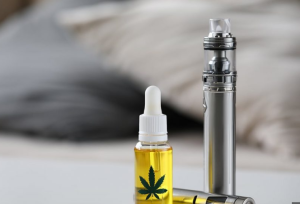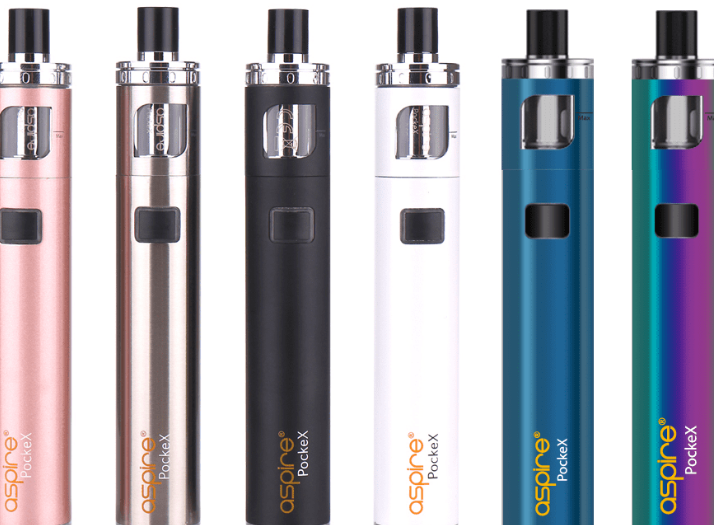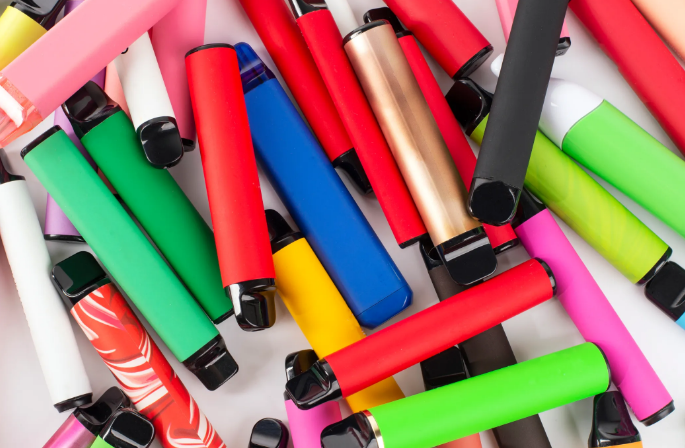The best-selling e-cigarette, JUUL, dominates with a sleek design, easy use, and widespread availability in various flavors.
Criteria for Best-Selling E-Cigarettes
Exploring the criteria for best-selling e-cigarettes reveals a complex interplay of design, battery life, ease of use, and flavor variety, alongside shifting consumer preferences and market trends. These elements collectively shape the landscape of the e-cigarette market, guiding both new users and seasoned vapers towards their preferred choices.
Factors Influencing Sales
Design
Design plays a pivotal role in the appeal of e-cigarettes. Sleek, compact devices that mimic the traditional smoking experience, like those offered by Juul, have seen immense popularity. These devices offer a discreet vaping experience, with a weight of approximately 20 grams and dimensions that fit comfortably in the palm of the hand. The aesthetic appeal, including color options and finish, significantly affects a consumer’s choice. Products that combine functionality with an attractive appearance tend to dominate sales charts.
Battery Life
Battery life remains a critical factor for consumers, dictating the device’s convenience and usability. E-cigarettes with extended battery life, such as those exceeding 300 puffs per charge, lead in sales. The market has seen a preference for devices equipped with lithium-ion batteries, known for their long lifespan and ability to support hundreds of charge cycles before performance begins to wane.

Ease of Use
Ease of use is another crucial selling point. Devices that offer simple operation, like pod systems with pre-filled cartridges or those featuring straightforward filling mechanisms for e-liquids, cater to both beginners and experienced users looking for convenience. The absence of complex settings, exemplified by products with draw-activated firing mechanisms, eliminates the learning curve and enhances user satisfaction.
Flavor Variety
Flavor variety significantly impacts consumer choice, with brands offering a wide range of flavors leading the market. A study shows that consumers prefer brands that offer an assortment of flavors, including fruit, menthol, and tobacco varieties. The ability to switch flavors easily without changing the entire pod or cartridge adds to the product’s appeal, making devices compatible with multiple flavor options more desirable.
Consumer Preferences and Market Trends
Consumer preferences have shifted towards more health-conscious choices, reflecting in the popularity of e-cigarettes as alternatives to traditional smoking. The demand for nicotine salt-based e-liquids, which provide a smoother throat hit at higher nicotine strengths, has grown. This shift has led to an increase in sales for devices optimized for nicotine salt use.
Market trends indicate a rising interest in customizable devices, allowing users to adjust settings such as power output and airflow to tailor their vaping experience. Devices that offer variable wattage settings, with power outputs ranging from 5 to over 200 watts, cater to this demand, providing both flavor enhancement and cloud production capabilities.
The e-cigarette market continues to evolve, driven by technological advancements and changing consumer preferences. Brands that stay ahead of these trends, offering innovative designs, long-lasting battery life, user-friendly features, and a broad flavor palette, consistently lead in sales. Quality materials and construction also play a vital role, with consumers willing to invest in devices that promise durability and performance. As the market grows, understanding these criteria becomes essential for both manufacturers aiming to capture consumer interest and for consumers navigating the expanding options available to them.

Top Best-Selling E-Cigarette Brands
Overview of Leading Brands in the Market
The e-cigarette market has seen tremendous growth over the past decade, with several brands emerging as leaders due to their innovative designs, advanced technology, and user-friendly features. Among these, brands like Juul, Vuse, and Blu have established themselves as frontrunners, capturing significant market share through strategic marketing and product development.
Juul Labs stands out for its sleek design and high nicotine content, which mimics the nicotine delivery of traditional cigarettes. The brand’s popularity soared due to its appealing flavors and discreet usage, making it a favorite among younger adults. Despite facing regulatory challenges, Juul continues to hold a substantial portion of the market.
Vuse, a product of Reynolds American, offers a range of devices from simple cig-a-likes to more advanced vaporizers. Vuse excels in battery life and build quality, providing a reliable vaping experience. Its Vuse Alto device, known for its smooth draw and rich flavors, competes closely with Juul in terms of sales and customer preference.
Blu, owned by Imperial Brands, is renowned for its wide range of flavors and starter kits designed for beginners. Blu’s products are widely available, making them accessible to a broad audience. The brand’s commitment to quality and customer satisfaction has helped it maintain a strong presence in the market.
Key Features and Product Lines of Top-Selling Brands
Juul‘s product line primarily focuses on its compact, USB-shaped device that offers ease of use and portability. The device operates at a power output of approximately 8W, ensuring efficient nicotine delivery. Juul pods come in a variety of flavors, including Mango, Creme, and Mint, although flavor offerings have been adjusted in response to regulatory pressures. The cost of a Juul starter kit is typically around $50, making it an attractive option for smokers looking to switch to vaping.
Vuse distinguishes itself with a diverse product range that caters to both beginners and experienced vapers. The Vuse Alto, for example, features a pod system with a 1.8ml capacity and a battery life that can last up to a day, depending on usage. The device’s pods are available in several flavors, such as Rich Tobacco and Menthol, at a nicotine concentration of 5%. Vuse also offers the Vibe and Solo lines, which feature different form factors and flavor options. The price for a Vuse Alto kit starts at around $35, providing a competitive option for consumers.
Blu offers a variety of e-cigarette models, including the Blu PLUS+ and Blu Disposable. The Blu PLUS+ is designed for convenience, with a long-lasting battery and a USB charge port for on-the-go charging. Blu Disposables are ideal for users seeking a no-maintenance option, available in flavors like Cherry Crush and Classic Tobacco. The Blu PLUS+ Xpress Kit is priced at approximately $12, offering an affordable entry point into the vaping world.
Analysis of the Best-Selling E-Cigarette Models
Exploring the top models in the e-cigarette market reveals a competitive landscape where performance, price, and consumer feedback play pivotal roles. This analysis dives into the specifics of each factor, highlighting the strengths and weaknesses of leading models.
Performance
Key features such as battery life, vapor quality, and device reliability stand out when comparing best-selling e-cigarette models. The JUUL, for instance, boasts a compact design with a battery life designed to last a day for moderate users, making it highly popular among users looking for convenience and efficiency. On the other hand, models like the Vaporesso XROS offer adjustable airflow features and a battery capacity of 800mAh, catering to those prioritizing vapor quality and customization.
Battery life varies significantly across models, with some devices offering up to 3000mAh, ensuring prolonged use without frequent recharging. The SMOK Novo 4, with its adjustable wattage up to 25W, offers a balanced performance for those seeking a tailored vaping experience.
Price
Price competitiveness is a critical factor for consumers when selecting an e-cigarette. Entry-level models like the JUUL start at around $35, appealing to new users with its straightforward design and ease of use. More advanced systems, such as the Vaporesso Luxe PM40, are priced around $50, offering enhanced features like a high-resolution display and adjustable power settings, providing value for more experienced users.
The market also shows a trend towards more affordable, refillable pod systems, which offer the advantage of lower long-term costs compared to pre-filled pods. For example, the Uwell Caliburn G, priced at approximately $30, combines affordability with high-quality performance, featuring a refillable pod system that can significantly reduce expenses over time.
Consumer Feedback
Consumer reviews highlight the importance of flavor variety, device durability, and customer service. Brands that offer a wide range of flavors, such as the VooPoo Drag X, receive positive feedback for catering to diverse preferences. Durability concerns, particularly regarding the lifespan of coils and pods, are common among users, with many preferring models that offer replaceable components to extend device usability.
Customer service excellence significantly influences brand loyalty, with companies like Vaporesso and SMOK receiving commendation for their responsive support teams. Quick resolution of issues related to device malfunctions or warranty claims enhances consumer trust and satisfaction.

The Impact of Regulations on E-Cigarette Sales
The landscape of e-cigarette sales is significantly shaped by an evolving framework of global regulations, which vary widely from country to country. These regulations have a profound effect on market dynamics, influencing everything from product availability to consumer choices and industry innovation.
Overview of Global Regulations Affecting E-Cigarettes
Countries around the world have adopted a range of regulatory stances towards e-cigarettes, from complete bans to strict regulations governing sales, marketing, and use. For example, countries like Brazil, Singapore, and Thailand have imposed outright bans on the sale and use of e-cigarettes, severely limiting market access. In contrast, nations such as the United Kingdom embrace e-cigarettes as a harm reduction tool, with regulated sales and advertising practices aimed at encouraging smokers to switch to less harmful alternatives.
The European Union enforces the Tobacco Products Directive (TPD), which sets standards for the manufacturing, presentation, and sale of e-cigarettes and refill containers. The TPD limits nicotine strength, restricts tank sizes, and requires health warnings on packaging, impacting product design and consumer choice across Europe.
In the United States, the Food and Drug Administration (FDA) has authority over e-cigarettes as tobacco products, requiring manufacturers to submit premarket tobacco product applications (PMTAs) for evaluation. The rigorous and costly PMTA process has led to a significant reduction in the variety of e-cigarette products available on the market, as only those that demonstrate public health benefits compared to traditional cigarettes are likely to gain authorization.
How Regulations Influence Market Dynamics and Consumer Choices
Regulations directly impact market dynamics by shaping the range of products that can legally be sold and influencing the competitive landscape. In regions with stringent regulations, smaller companies often struggle to meet compliance costs, leading to market consolidation around larger players who can afford the necessary investments in product development and regulatory approval.
Consumer choices are similarly affected by regulatory environments. In countries with heavy restrictions or bans, consumers may have limited access to legal e-cigarette products, potentially driving a black market for vaping products. This not only poses risks due to unregulated product quality but also undermines public health objectives by restricting access to safer alternatives to combustible tobacco products.
On the other hand, balanced regulatory approaches that recognize the harm reduction potential of e-cigarettes while minimizing youth uptake can foster innovation and competition. This encourages the development of higher quality, more effective products that can satisfy consumer demand and contribute to public health goals.
Regulations also dictate labeling, advertising, and flavor bans, which can significantly influence consumer preferences and behaviors. For instance, flavor restrictions, as seen in several U.S. states, aim to reduce e-cigarette appeal to youths but also limit adult smokers’ options for switching to e-cigarettes.